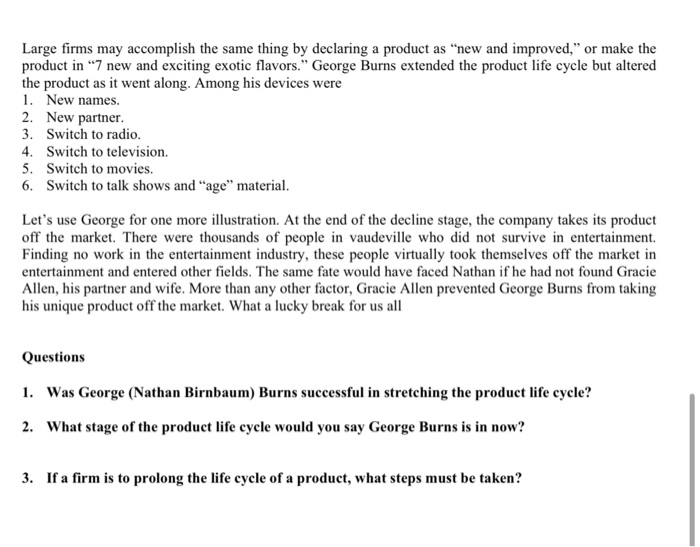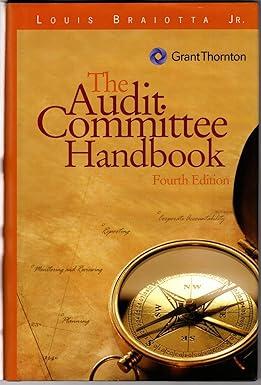question 1.2.3

Case Analysis This is the story of a comedian and some of the techniques he used to survive many years in show business. At the end of the tale, identify what there is in his life story that illustrates a point from this chapter in your textbook In the early years of the 20 century, Nathan Bimbaum decided that he wanted to spend the rest of his life in show business. The nation, in those days, did not have radio, television, or talking movies, and one of the premier forms of diversion for the overworked American public was vaudeville. Several times a day in theaters of major cities across the nation, vaudeville performers would come on stage and pursue their craft in front of generally appreciative audiences. Sometimes the vaudeville acts would share time with a silent movie or two, that gave the performers a break. The performers included singers, dancers, stand-up comedians, jugglers, acrobats, magicians, animal trainers, trapeze artists, and musicians. Nathan Birnbaum fancied himself a stand-up comedian, and he was able to get bookings in theaters in smaller cities like Albany, Akron, Peoria, and Wilkes-Barre. It wasn't like playing the Palace Theater in New York, but he made a living. Looking back on those days, Nathan admits that he probably was not the greatest comedian on the vaudeville circuit, and there were managers who would agree with that assessment. As a consequence, once Nathan had played a theater, the manager was often less than enthusiastic about bringing Nathan back a second time. Despite this managerial reluctance, Nathan had two things working in his favor. First, Nathan would tour the nation over a period as long as two years before having to go back to a manager and ask for a spot as a comedian. Maybe the manager would forget how bad Nathan was. Second, because most of the bookings were handled by mail (rather than a personal audition), Nathan could use a different name when negotiating a new contract for a two-week appearance in Oshkosh, for example. True, when Nathan arrived in person, the manager might discover the ruse, but a contract was a contract, and Nathan would have his two weeks' employment Switching names would work for only so long, so Nathan added a partner. He lined up an attractive young lady to feed him straight lines. The audience liked her straight lines so much and did not laugh at Nathan's jokes) that Nathan changed the act-giving the humor to his partner and becoming the straight man himself. The act was off and running. The couple moved from vaudeville to a long career in radio. Radio was the king of entertainment for many years, but it too faded, and people stopped tuning in to radio networks to hear comedians. At about this point, Nathan and his partner, who was now his wife, performed in a situation comedy for the newest medium-television. By the time TV came along, Nathan and his wife had a grown son who was worked into the comedy series, and it was very popular for quite a few years. Then tragedy struck. Nathan's partner of so many years died. Not only was Nathan now a widower, but he was again alone as a performer. Entertainment did not forget Nathan, however. He did some standup comedy routines here and there and appeared on his share of talk shows, keeping his face in front of the news cameras. Then he began making movies. By now, he was able to play just what he was-an old man. This exposure in suitable screen vehicles led to all sorts of other bookings, as many as Nathan wanted. It should come as no surprise to your class to reveal that back in the old vaudeville days when Nathan used all those fake names, one of the names was "George Burns." Now, the question is: What does this story have to do with Chapter 13 on the marketing mix? What George Burns was trying to do through all those years was prolong the life cycle of a product known as George Burns, comedian. Large firms may accomplish the same thing by declaring a product as new and improved," or make the product in 7 new and exciting exotic flavors. George Burns extended the product life cycle but altered the product as it went along. Among his devices were 1. New names. 2. New partner. 3. Switch to radio. 4. Switch to television. 5. Switch to movies. 6. Switch to talk shows and "age" material. Let's use George for one more illustration. At the end of the decline stage, the company takes its product off the market. There were thousands of people in vaudeville who did not survive in entertainment Finding no work in the entertainment industry, these people virtually took themselves off the market in entertainment and entered other fields. The same fate would have faced Nathan if he had not found Gracie Allen, his partner and wife. More than any other factor, Gracie Allen prevented George Burns from taking his unique product off the market. What a lucky break for us all Questions 1. Was George (Nathan Birnbaum) Burns successful in stretching the product life cycle? 2. What stage of the product life cycle would you say George Burns is in now? 3. If a firm is to prolong the life cycle of a product, what steps must be taken









